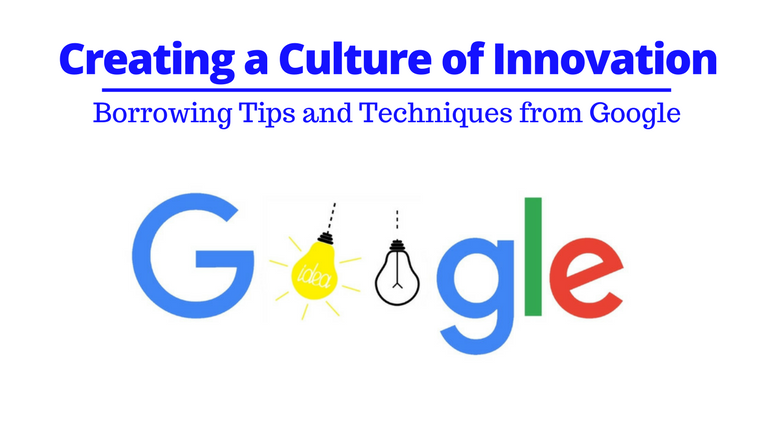
What’s the all-time best career advice I’ve ever received?
Don’t reinvent the wheel.
As much as we all want to be unique, innovation doesn’t necessarily mean coming up with an idea from scratch. It means taking ideas and creations that are out there and combining them or building on them to create something even better.
Once I’d cemented that idea into my mind, my world was opened to much bigger and better ideas and projects than before.
So when it comes to creating a culture of innovation in your classroom, why not borrow ideas from some of the people who do innovation best: Google!
Google is all about innovation. There are a number of techniques they use to create a culture of innovation in their organization. So why not adapt these techniques to fit your classroom?
Following these tips will allow your students to think outside the box and get creative with the tasks you put in front of them.
Mission
What is your overall class or school mission? What is the goal that drives every decision you and students make in class? Google execs know that a clearly stated mission helps boost motivation.
At Noble Charter Schools in Chicago, for example, the network-wide mission is that all students will graduate with the skills to make a positive multigenerational change on their communities. Students know that everything they do in school is preparing them to fulfill this mission, and it increases motivation to work hard.
All you need to do is set that one mission, and allow students to come up with their own paths to achieving it. Too strictly laying out the course of activities can be a major killer of innovation and creativity.
Voice
Google allows emails directly to top executives so that all employees can voice their ideas, concerns, and feedback. This would have been unthinkable in a traditional corporate setting, but they changed the rules. Because for Google, innovation and ideas were more important than seniority and the established hierarchy.
So while it may feel uncomfortable at first, you can change the rules in your classroom as well.
Give students voice in your classroom by using surveys or polls. Let students vote on which short story they’ll read next or which science experiment they want to do next week. Students will be empowered by knowing that they have a say in classroom decisions.
Another great way to let students share their voices is to solicit student feedback on how you’re doing. Once a quarter ask your students to “grade their teacher”.
You probably want to create a structured form for them to use when giving feedback. Let it be anonymous and you’ll be surprised by the useful suggestions students have to make class time more productive and enjoyable.
Space
There’s something about a cubicle or neatly organized desks that can kill creativity. Google allows their employees to work from cafes, beanbags, etc. Employees can do their work inside at a conference table or outside in the grass, as long as the work gets done.
While this may not be entirely possible in your school, you can set up different spaces in your classroom and allow students to choose what works for them.
You can also give students options throughout the week for them to choose how they work best. Small group, partner, or independent work? Read and write by hand, or on the computer?
Bringing a Culture of Innovation to Life
When asked about the philosophy behind their culture of innovation, Google’s Senior VP of People Operations had the following idea to share:
“Personally, I believe this culture is an insight about the human condition. People look for meaning in their work. People want to know what’s happening in their environment. People want to have some ability to shape that environment.”
In the same way, students look for meaning in their school work. Students who see meaning in their work, and can make decisions both about the work being done and the way they interact with said work are much more likely to be able to think in innovative ways.
Get ready for some out of the box thinking!



Leave a Reply